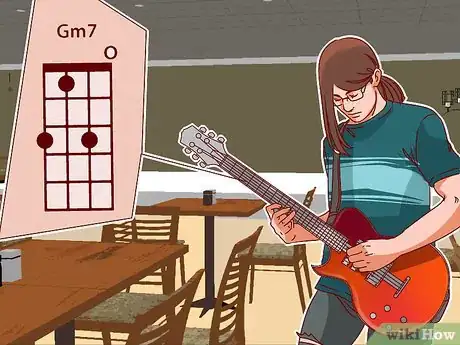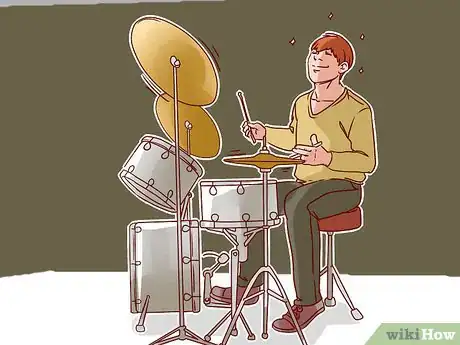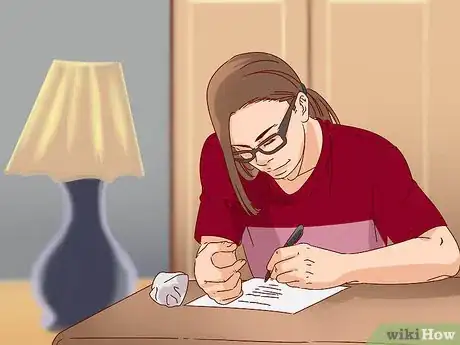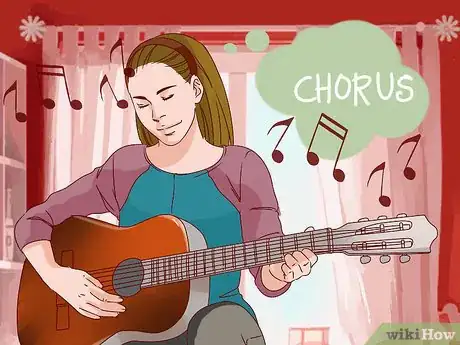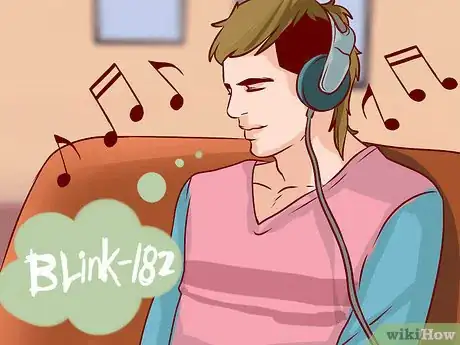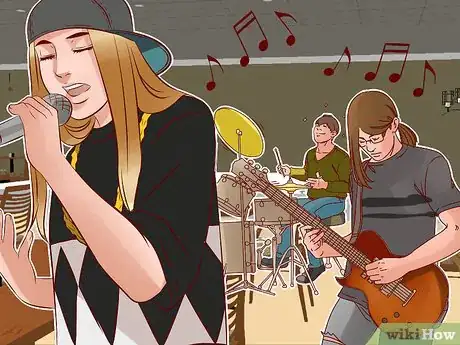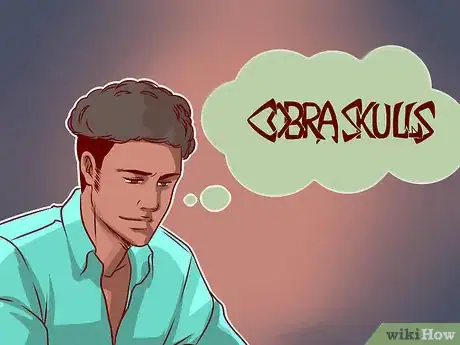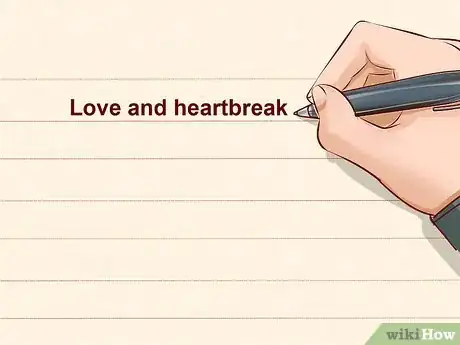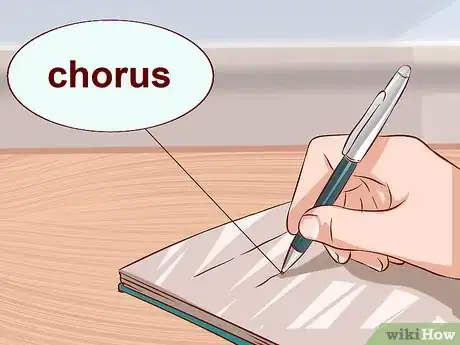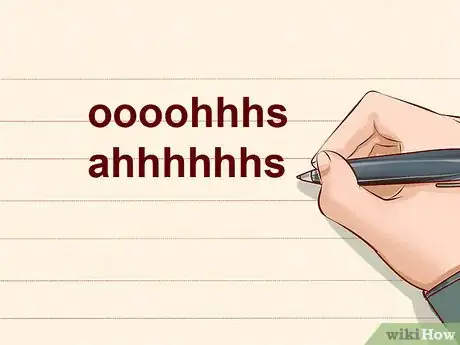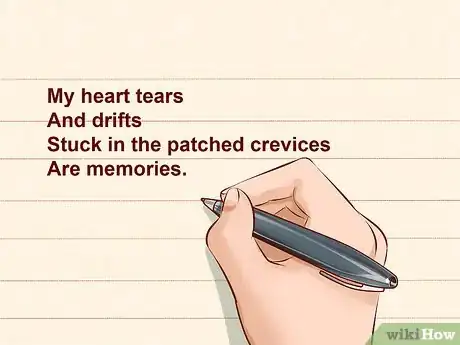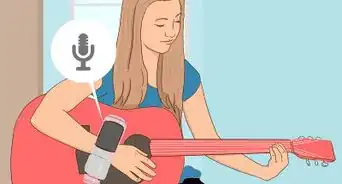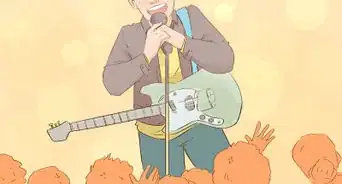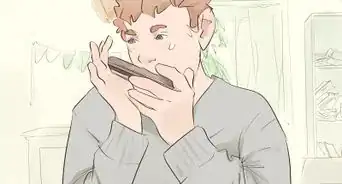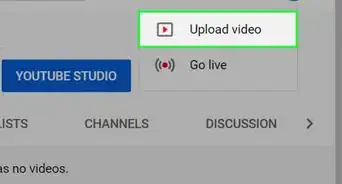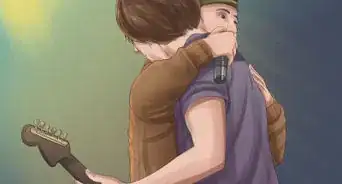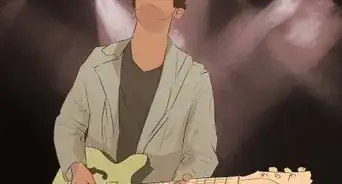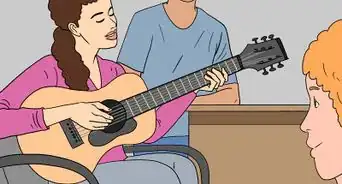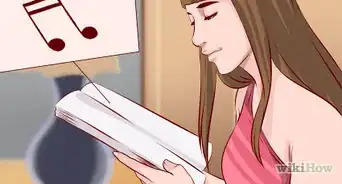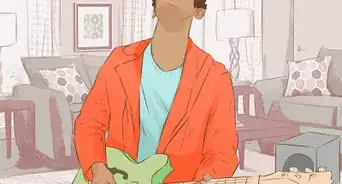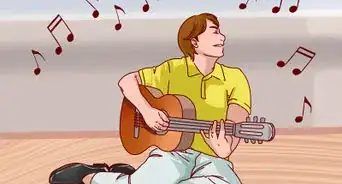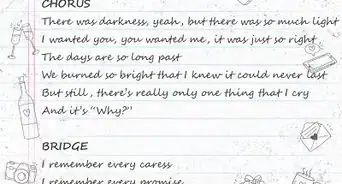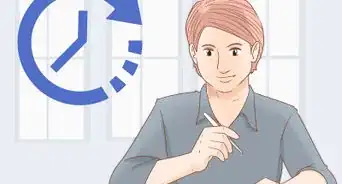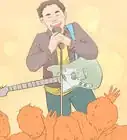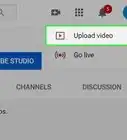This article was co-authored by Tanisha Hall. Tanisha Hall is a Vocal Coach and the Founder and Executive Director of White Hall Arts Academy, Inc. an organization based in Los Angeles, California that offers a multi-level curriculum focused on fundamental skills, technique, composition, theory, artistry, and performance at a conservatory level. Ms. Hall's current and previous students include Galimatias, Sanai Victoria, Ant Clemons, and Paloma Ford. She earned a BA in Music from the Berklee College of Music in 1998 and was a recipient of the Music Business Management Achievement Award.
This article has been viewed 80,357 times.
Pop Punk combines the aggressive energy and instrumentation of punk with catchy melodies and hooks of pop music. Begun by The Ramones and Buzzcocks in the 1970s and made famous by bands such as Green Day in the 1990s and Blink-182 in the 2000s, pop punk has been popular and widespread for years. Luckily, there is no wrong way to write a pop punk song and, as far as writing music goes, the genre is relatively easy to learn.
Steps
Writing the Instrumentals
-
1Learn power chords on the guitar to play any pop punk song. Power chords are the backbone of every punk song ever written. They are short, easy to play, and sound great when played loud. A power chord is just three notes -- your index finger on the E or A string, and the next two strings fretted two frets down. You can move this form anywhere on the guitar to play every single chord. For example, an A, G, D, chord would look like:
- A-Chord | G-Chord | D-Chord |
- |e|----x-----|------x------|-----x------|
- |B|----x----|------x------|-----x------|
- |G|----x----|------x------|-----7------|
- |D|----7----|------5------|-----7------|
- |A|----7----|------5------|-----5------|
- |E|----5----|------3------|-----x------|
-
2Follow the guitar chords on bass to get the basics of pop punk. Bass players have a lot to look forward to in pop punk. If you're stuck or a newbie, quickly repeated 16th notes on the bass (basically playing one note over and over again) can follow the chords on the guitar to instantly fit in. For example, if the guitarist is playing an A-bar chord, you play the A note in time with each one of her chords. From here you can feel free to improvise during chord changes, before switching to the chorus or verse, or if you can think of a fun bass riff.
- Check out Green Day's "She," which opens with a great but simple bass riff, and note how it follows the guitar, but with subtle flourishes.
- Rancid's "Olympia, WA" is almost straight 16th notes on the bass, carrying the song along.
Advertisement -
3Focus on your kick, snare, and hi-hat on the drums for a driving, strong beat. You want to keep the song moving forward with a quick, regular beat. Sixteenth notes on the hi-hat, alternating the kick drum and the snare every other note. While there is a lot more to drumming than this, this basic beat can go behind any pop punk song.
- Big, quick fills on the toms and crash cymbals are the common way to transition into new parts of the song.
- Pop-punk drummers like Travis Barker are talented musicians who drive the song forward. Focus on keeping time perfectly, especially at high speeds, to become an invaluable drummer.
-
4Start writing a song with just one good guitar riff. 95% of pop punk songs are short, fast, and guitar-driven. Find 3-4 notes or power chords that you think sound good together and make up a short little phrase to repeat. Most pop-punk songs are simple -- find a riff you like and repeat it to write a verse or chorus.
- Chop up and change your favorite riffs from other bands. Pop-punk is heavily borrowed, adapted, and repeated.
- In general, three power chords are the bare minimum for a song.
- Play with the rhythm and timing of your chords to give them a unique spin.
-
5Write a new riff for the chorus or verse, so you have two unique melodies. To be honest, many bands play the exact same chords, just in a different order or tempo (listen to the Ramones for proof). In general, the verse is slower and or muted and the chorus gets louder, faster, and more melodic. When coming up with a chorus:
- Keep it simple -- the chorus should not be hard to follow.
- Aim for catchy melodies -- this is where you hook people's ears.
- Add a short, improvised 1-2 bar riff coming in and out of the chorus to mark each change.
-
6Consider coming up with one new section for the breakdown or solo. After hearing the verse and chorus twice, most bands add in one quick, unique section to change the song up. This is called the breakdown, and there is often a solo, different lyrics, or a slow drop and build back to full energy or tempo. They are usually slower, either building up power or leaving room for another instrument to play by itself. If you're struggling to write breakdowns, try to:
- Play the verse or chorus at half-time.
- Replay or change up the intro riff or melody.
- Simplify the chords to the 1-2 most important ones, leaving space for vocals or a solo.
- Drop out certain instruments, then slowly build them back in.
-
7Follow the basic pop song structure when crafting songs. Most pop punk songs begin with an intro, and they usually then follow this order: Intro, first verse, second verse, chorus, third verse, chorus solo and/or bridge, and then finish with the chorus again or outro. Though some songs will be different, this is the most common structure of a Pop Punk song.
- Blink-182's "Dammit" is an excellent example. All you have to write is a riff for the verse, the chorus, and the bridge. when it comes to solos, they are usually very simple. Occasionally it's just the intro again, and in some cases there are no solos at all
-
8Play the song as fast as possible. Pop punk is not about sitting back quietly. It is about brash, loud, youthful energy. All pop-punk songs should be played as fast as you feel comfortable, and maybe even a little faster. Once you've got the structure down, start thrashing.
- When you play live, your number one goal is to have high, contagious energy. Quick songs make it much easier to get people jumping around with you.
- It is rare for songs to go longer than three minutes. Many are even over before the two minute mark.
-
9Pick up influences from other bands and genres to make your songs stand out. Pop-punk, luckily enough, is easily adapted to other influences and ideas. Keep playing music of all types to learn new riffs and styles. It is the best way to make your own song unique. Common genres to blend with pop punk include:
- Ska and Reggae (Rancid, Operation Ivy, Less Than Jake.
- Country (Social Distortion, Lucero)
- Swing/Rockabilly (The Misfits, Cobra Skulls).
Writing the Lyrics
-
1Come up with one image, idea, or person to write a song about. Pop-punk songs can be about almost anything. Most commonly, however, they talk about love, adolescence, and rebellion. Unlike its older cousin punk, pop-punk songs are focused more on melodies and relatable lyrics than hard-hitting social criticism. Common subjects include:
- Love and heartbreak
- Suburban angst
- Rebellion against school, parents, etc.
- Joke-y and goofy lyrics
- Growing up.[1]
-
2Focus on a simple, catchy chorus before anything else. Pop music, no matter what subgenre, is about music that hooks the listener in. You want everyone singing or humming your chorus when the song is done. Keep it short, simple, and make sure it sounds great.
- Whistling the lyrics is a great way to hear the melody. Write lyrics so that they sound great even when you're just whistling.
- Green Day, Blink-182, Operation Ivy, and Rancid are great bands on their own, but it is their ability to write a catchy, radio-friendly chorus got them famous.
-
3Make verses short, matching the same length and rhyme scheme for each. The easiest way to write song lyrics is in rhyming couplets. Basically, you write one line, then write another line that rhymes with it. These lyrics need to flesh out your chorus and idea. If you're stuck with the verses, you might--
- Tell a story ("Timebomb")
- Describe related moments or images about a girl, life, school ("Story of my Life.").
- Explore a theme or idea, using each verse to talk about a different aspect ("Longview").
-
4Consider adding a refrain or sing-along section. The sing-along, often little more than "lalalas" "oooohhhs" and "ahhhhhhs," is a staple of pop-punk. Often used in the chorus or outro, a good sing-along section is key for a pop-punk section. You don't need one in every song, but even something as simple as "nananana nanananana" in "All the Small Things" is the difference between a good song and a hit.
-
5Get personal. Pop punk is personal medium. Your own worries, fears, and anger will fit right at home in the lyrics, so don't shy away from personal stories or opinions. Punk is known as an inclusive, do-it-yourself genre, so just be yourself. Even somewhat angsty, emo-type lyrics work well, as evidenced by Good Charlotte, Fall Out Boy, and Screeching Weasel.
- Feel free to get weird. The Lillingtons, for example, made their mark with sci-fi inspired songs.
- Feel free to be funny. Pop-punk has a long history of pranksters and joke songs, from the poppier NOFX songs to the self-awareness of The Steinways.[2]
Expert Q&A
Did you know you can get expert answers for this article?
Unlock expert answers by supporting wikiHow
-
QuestionHow do you manage your emotions while singing?
 Tanisha HallTanisha Hall is a Vocal Coach and the Founder and Executive Director of White Hall Arts Academy, Inc. an organization based in Los Angeles, California that offers a multi-level curriculum focused on fundamental skills, technique, composition, theory, artistry, and performance at a conservatory level. Ms. Hall's current and previous students include Galimatias, Sanai Victoria, Ant Clemons, and Paloma Ford. She earned a BA in Music from the Berklee College of Music in 1998 and was a recipient of the Music Business Management Achievement Award.
Tanisha HallTanisha Hall is a Vocal Coach and the Founder and Executive Director of White Hall Arts Academy, Inc. an organization based in Los Angeles, California that offers a multi-level curriculum focused on fundamental skills, technique, composition, theory, artistry, and performance at a conservatory level. Ms. Hall's current and previous students include Galimatias, Sanai Victoria, Ant Clemons, and Paloma Ford. She earned a BA in Music from the Berklee College of Music in 1998 and was a recipient of the Music Business Management Achievement Award.
Songwriting Instructor Managing your emotions comes with practice. As you sing a song more often, you should become less emotionally affected by it and still be able to deliver its impact. Some people don't like singing certain songs because they're too emotional for them. I’d say, keep singing it in your practice time. As you continue practicing, your body will get used to it and you won’t react to the words.
Managing your emotions comes with practice. As you sing a song more often, you should become less emotionally affected by it and still be able to deliver its impact. Some people don't like singing certain songs because they're too emotional for them. I’d say, keep singing it in your practice time. As you continue practicing, your body will get used to it and you won’t react to the words. -
QuestionCould a pop punk song be 5+ minutes?
 Community AnswerYour song can be however long you like, though pop punk songs tend to be shorter. It's okay to break the rules. This is punk after all!
Community AnswerYour song can be however long you like, though pop punk songs tend to be shorter. It's okay to break the rules. This is punk after all! -
QuestionHow does the singer of a punk band sound better with the guitarists and drummer?
 Community AnswerIt's mostly knowing what key you're in and keeping in rhythm with the song.
Community AnswerIt's mostly knowing what key you're in and keeping in rhythm with the song.
Warnings
- Do not think or say Pop Punk is actually Punk. Though it is a sub-genre, they are still two very different things, and you will dismiss many people...make sure you know the difference!⧼thumbs_response⧽
References
- ↑ http://www.avclub.com/article/beginners-guide-bouncy-buzz-pop-punk-201853
- ↑ http://www.avclub.com/article/beginners-guide-bouncy-buzz-pop-punk-201853
- ↑ Tanisha Hall. Vocal Coach. Expert Interview. 27 March 2020.

